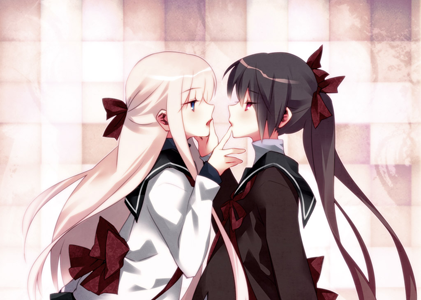>>24227
Thank you for working on this.
There are a couple of guides I like to suggest for editors who are just starting out, or in need of guidance; these are Anon Black's guide, which is currently available in a somewhat disordered fashion on her tumblr page at https://translatoranon.tumblr.com/tagged/guide ; and Red Hawk Scans' guide, republished by Fallen Syndicate Scans, and available with all pictures on the Internet Archive at https://web.archive.org/web/20190912213919/https://fallensyndicate.wordpress.com/typesetting-tutorial/ . Most of what I say is just reiterating items expressed by one or both of these guides.
I'll refer you also to Yuri Project's own guide, available on the wiki at https://wiki.yuri-project.net/Editing%20Tutorial . A lot of what it talks about isn't relevant if you have clean raws ripped from the web, and don't have to deal with cleaning up scanned pages torn from a book; but it still has good information on redrawing and setting type.
When there are stylistic decisions to be made, I often refer to the guidelines listed at https://wiki.yuri-project.net/Guidelines . These can be helpful if you're ever uncertain about some particular element of the editing process.
Attached are some comments about this work in particular. I would like to mention a couple general things to keep in mind, as well:
・You don't have to expand and shrink your text to make it exactly fill the size of a speech balloon. In the original, many balloons contain a large amount of white space, and it's recommended to use the relative text sizes in the original as a guideline for the relative sizes of the translated text. As a rule of thumb, it's good to vary from a main text size by only a pt or two in either direction, for a total range of about three pt sizes.
・The shape of the text block should ideally follow the shape of the text container. For most balloons, this means being thickest in the middle and thinnest at the top and bottom; for a lot of captions, it means keeping the width fairly consistent across all lines to keep it as rectangular as possible. I think that Anon Black does a good job of explaining why this requires some manual intervention in https://translatoranon.tumblr.com/tagged/tutorial in particular.
Again, thank you for your work! I look forward to the next revision.

